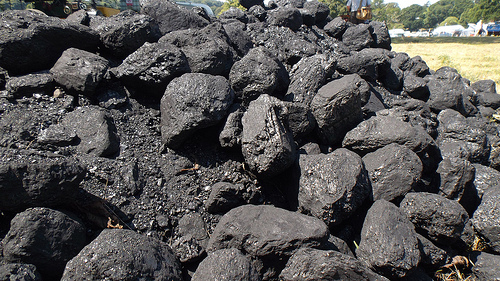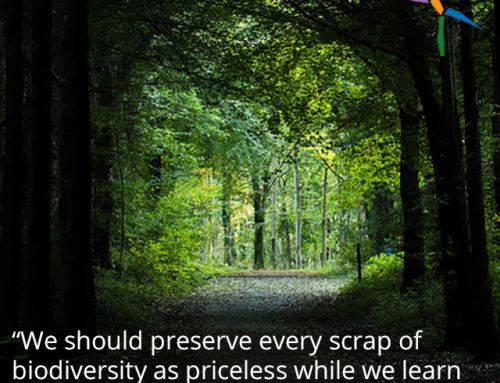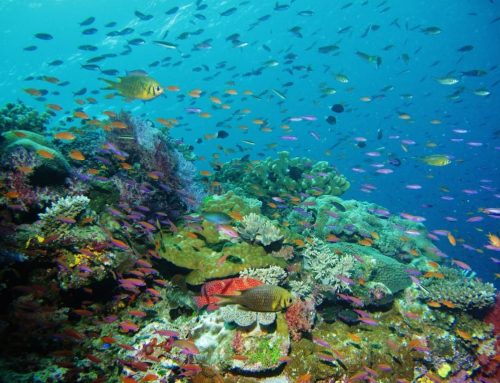Consumption isn’t just about “stuff” and purchases, it’s also about resources. And, in America in particular, energy consumption per person leaves a huge carbon footprint. In training our brains to think about consumption, energy can be harder to wrap our minds around than products or “stuff” because it’s less of a tangible thing. To help you get there, we’ve put together ten facts about energy consumption to particularly put things into perspective for you.
Fact One: Electricity Isn’t the Primary Energy in the United States
Electricity is actually considered a secondary form of energy that’s generated from the following primary forms of energy: petroleum oil, natural gas, coal, nuclear and renewable energy. As you can see, the larger part of that list of primary energy sources involves fossil fuels, emissions and pollution.
Fact Two: Americans are Energy Hogs
America makes up about five percent of the global population, but it uses a whopping 26% of all of the global energy. While some of that usage is related to manufacturing, the real differential between American energy usage and global energy usage comes from heating and cooling homes as well as the car culture.
Fact Three: Energy Demand Isn’t Peaking
While most reports indicate that peak oil is a real entity and that other sources of energy are also reaching their peak point, demand for energy continues to grow. The American demand for energy, for example, is increasing by three percent per year. In countries that are developing into industrialized countries with a higher standard of living, the increase in demand is even greater.
Fact Four: Standby for Energy Wasting!
Standby is a state where appliances are in the “off” position but are still actually using about eighty-five percent of the normal amount of electricity. They may, and in most cases are, waiting for signals from remote controls. In most American households, an average of eight appliances is left on standby at any one time.
Fact Five: Google It!
According to omnipresent Google themselves, the energy that it takes to conduct a hundred Google searches is the equivalent of a 60 watt light bulb burning for twenty-eight minutes. Google uses about 0.0003 kWh of energy to answer the average search query, which translates into about 0.2 g of carbon dioxide released.
Fact Six: Not Everything is Bigger in America
If you’ve seen the recent smog issues in Beijing, then this should be no surprise to you. Despite the massive size of the American carbon footprint, China has surpassed the U.S. both as the world’s largest energy consumer and as the largest emitter of CO2.
Fact Seven: Controlled Energy is Actually a Fairly Modern Invention
About 5000 years ago, man created his first energy source other than ancient fire (thank those cavemen!). It wasn’t until 1821 that the first natural gas light was created. And the first power plant wasn’t opened until 1882 by Thomas Edison. It serviced just eighty-five buildings. What seems like a standard of living that we can’t do without now is actually a fairly modern state of being.
Fact Eight: It Really Is the Cars
While much about pollution and CO2 burn is blamed on industrialism, more than 1/5 of the world’s energy is used for transport. It’s followed by industrial energy uses, construction and agriculture. The largest source of transportation energy is gasoline, which accounts for about 792.5 gallons of burn per day. Think about walking to the store!
Fact Nine: There is an End to Coal
If you dream of a coal free world, then rejoice. There is an end in sight and it happens in or around 2155 when the World Coal Institute predicts that all of the planet’s coal reserves will run out. The question is, will we still have a habitable planet then? The increase in wind and solar energy sources gives great hope!
Fact Ten: Conserve Energy. Cook in a Microwave
Microwaves actually use about fifty percent less energy than conventional ovens do. If you can handle your food soggy, then the more energy efficient cooking option is the microwave.
Did we miss a fact about energy conservation that you really, really feel that we should have shared? Tell us about it on the social media channels below.
Facebook | Twitter | Instagram | Tumblr | Pinterest | Google+
Photo Credit: oatsy40 via Flickr





